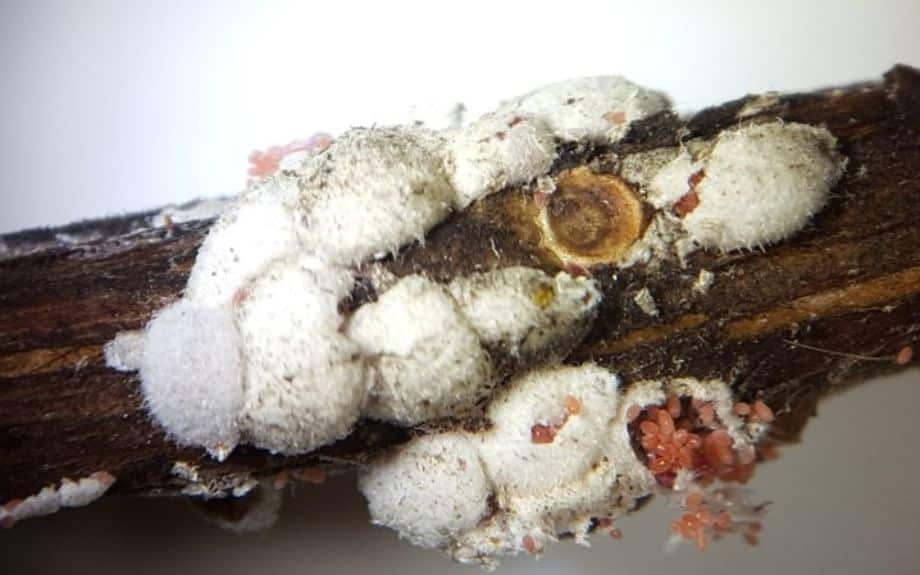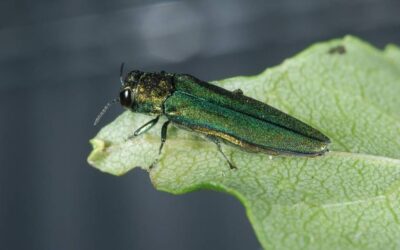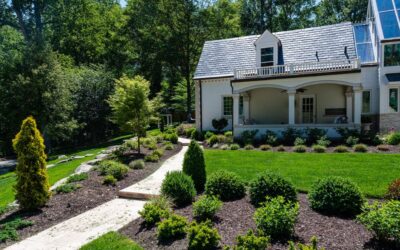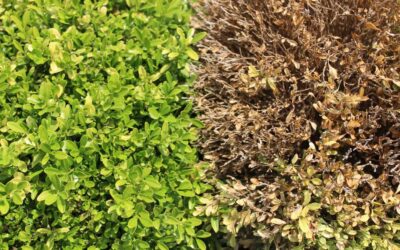Blog Topics
Crape myrtle bark scale (CMBS) is an insect pest coming for your Northern Virginia trees. In addition to impacting the health of crape myrtles and species, CMBS infestations reduce the beauty of your trees and can even invite additional pest activity.
Quick action is key when dealing with pests, so read on to learn how you can:
- Identify crape myrtle bark scale
- Recognize the damage crape myrtle bark scale causes
- Know which of your trees and shrubs are vulnerable to CMBS
What is Crape Myrtle Bark Scale
Crape Myrtle Bark Scale (Acanthococcus lagerstroemiae) is a pest that originated in Asia and was first spotted in Virginia in 2014. CMBS is a tiny insect of the order Hemiptera that primarily infests crape myrtle trees, causing damage to their bark and leaves.
These pests are about the size of a pinhead and have a white or grayish color. They feed on the tree, sucking out vital nutrients and weakening it. By knowing how to spot Crape Myrtle Bark Scale on your trees and understanding its effects, you can take the necessary steps to protect your trees from this harmful pest.

Look for this sign of CMBS on your crape myrtle trees. Photo used courtesy of Helene Doughty, Virginia Polytechnic Institute and State University, Bugwood.org.
How to Spot Crape Myrtle Bark Scale on your trees
While this invasive pest isn’t deadly like the spotted lantern fly or emerald ash borer, CMBS infestations still take a toll on the beauty and health of your crape myrtle trees.
To spot CMBS on your trees, closely inspect the branches and trunks for a white, waxy substance. This substance will appear as small patches or clusters on the bark. It may also be accompanied by tiny black dots, the scale insects themselves.
If left untreated, crape myrtle bark scale can lead to stunted growth, yellowing leaves, and a reduction in the size and number of flowers.
If you suspect a crape myrtle bark scale infestation, it is important to act quickly. Contact a professional tree service to assess the situation and recommend appropriate treatment options to protect your trees.
Honeydew and Sooty Mold
Another sign of a CMBS infestation to keep an eye out for is honeydew and sooty mold.
The crape myrtle bark scale secretes a substance called honeydew, a sticky, sweet substance which can attract ants and other insects. This honeydew becomes a breeding ground for sooty mold. This black fungus can cover the leaves and branches of your tree, making them less attractive.
Take action and call in a professional if you spot honeydew or sooty mold.
Trees Vulnerable to Crape Myrtle Bark Scale
Be aware of the vulnerable trees affected by the crape myrtle bark scale. Certain varieties of crape myrtle, such as Lagerstroemia indica, and hybrid cultivars like Natchez and Muskogee, are particularly at risk, but other species can be targeted, including:
- Persimmon
- Boxwoods
- Fig Trees
- Pomegranate
If you have any of these trees and shrubs in your Northern Virginia yard, it’s crucial to watch for signs of crape myrtle bark scale infestation and to take appropriate measures to protect your trees.
Need a Hand with Crape Myrtle Bark Scale or Another Pest?
Riverbend Tree Service is here to help! We offer complete tree health management and can address any pest or disease issue you’re dealing with in Fairfax and Loudoun counties. Call us today at 703-402-9366.
Give Us a Call at 703-402-9366
If you'd like help with your trees or landscape, have any questions, or would like to schedule an appointment with one of our Certified Arborists, please give us a call. We'd love to hear from you!



